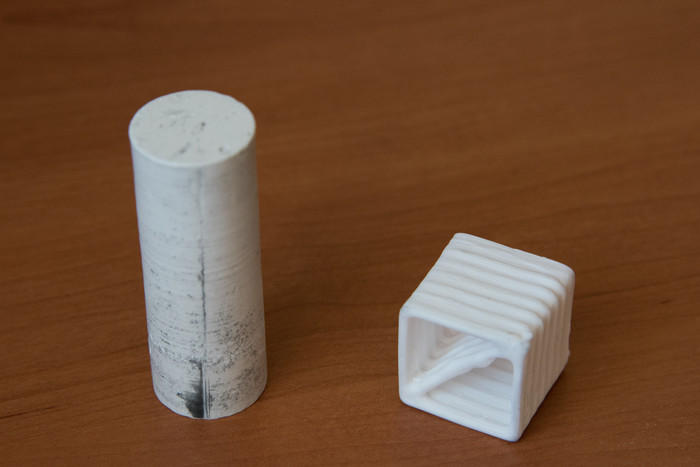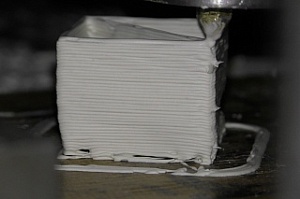TSU scientists have developed a 3D printer that has no analogs. It allows printing ceramics that whose properties compete with those of high alloy steel non-ferrous metals and hard alloys. Now scientists have completed testing of the technology, thanks to which it will be possible to obtain three-dimensional products with a wide range of applications in energy, radioelectronics, mechanical engineering, the chemical, oil, and gas industries, and the defense sector.
- Ceramics occupy a special place among the new materials. Due to the characteristics of the structure they have different parameters of thermal conductivity, high strength, and hardness, which determine their application, - says Vladimir Promahov, researcher at the University. - However, there is a problem with the production of ceramic products of intricate shape, which is why they do not have a wide distribution.
According to Promahov, until now the main method was pressure die casting, which does not allow obtaining ceramic products with complex configuration. Currently, there are methods of 3D printing of complex geometries, but they allow obtaining porous products of low strength with the remains of adhesive materials.

- Our 3D printer is the first in the world that can print ceramics of this class: monolithic in its structure, with complex configuration, up to tens of microns printing, - says Vladimir Promahov. - With it you can produce three-dimensional products such as hollow spheres, honeycomb structures that cannot be obtained by conventional castings. Also, the printer will have the possibility of continuous printing.

The advantage of the work of TSU scientists is comprehensiveness: they not only work with the technology of printing products, but also synthesize materials for it. In particular, with the method of "solid flame" - self-propagating high-temperature synthesis (SHS) based on the exothermic combustion reaction, scientists obtained ceramic powders (carbides, nitrides and borides of metals).
- Then we make slurry from the powders, which at a particular temperature take the consistency of sour cream that is suitable for use as raw materials for the 3D printer, - explains the scientist. - After FDM (3D printing) in certain technological conditions we obtain semi-finished products, which are sintered for the synthesis of the solid product with desired properties and shape.

The products obtained can be used as protective panels of space devices, separate parts of propulsion systems, substrates of microcircuits, and in other applications.
Vladimir Promahov emphasized that the TSU method for producing three-dimensional ceramic products using a 3D printer received a positive decision on granting a patent. Under the project, supported by a grant of the Russian Foundation for Basic Research, the research team from the Laboratory of High-Energy Systems and New Technologies, and Laboratory of High-Energy and Special Materials are planning to adapt the technology to a wide range of ceramics.

